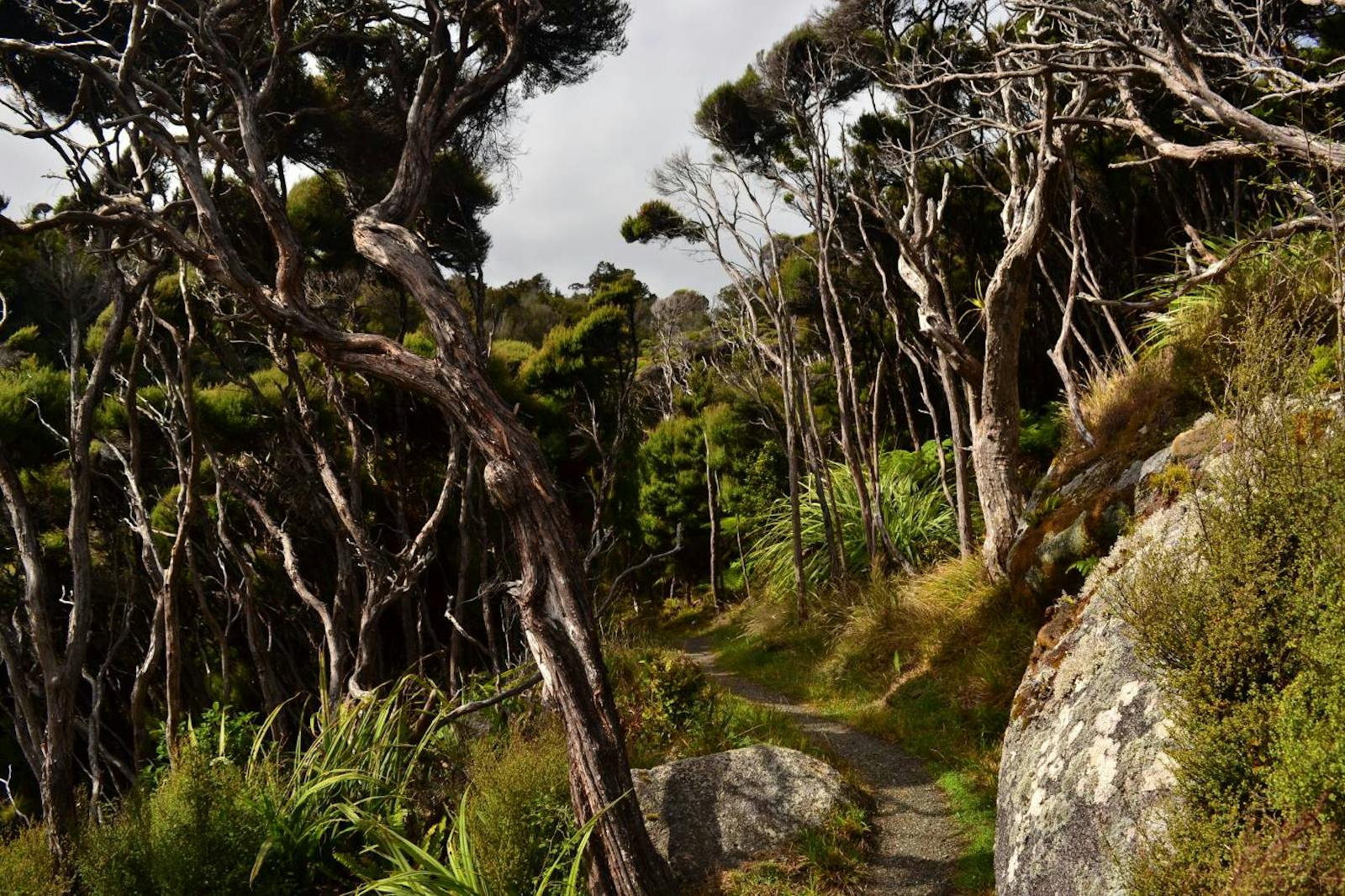Rakiura Island Temperate Forests
The ecoregion’s land area is provided in units of 1,000 hectares. The conservation target is the Global Safety Net (GSN1) area for the given ecoregion. The protection level indicates the percentage of the GSN goal that is currently protected on a scale of 0-10. N/A means data is not available at this time.
Bioregion: New Zealand (AU1)
Realm: Australasia
Ecoregion Size (1000 ha):
169
Ecoregion ID:
174
Conservation Target:
100%
Protection Level:
8
States: New Zealand
Rakiura Island (Stewart) just south of the South Island of New Zealand supports one of the most southern temperate rainforests in the world. The extraordinary flightless and nocturnal parrot, the kakapo (Strigops habroptilus, still occurs here, as does the Steward island subspecies of the kiwi. The isolation and lack of some introduced predators has allowed many vulnerable native species to survive here, and provided insight into what mainland New Zealand was like before the arrival of human.
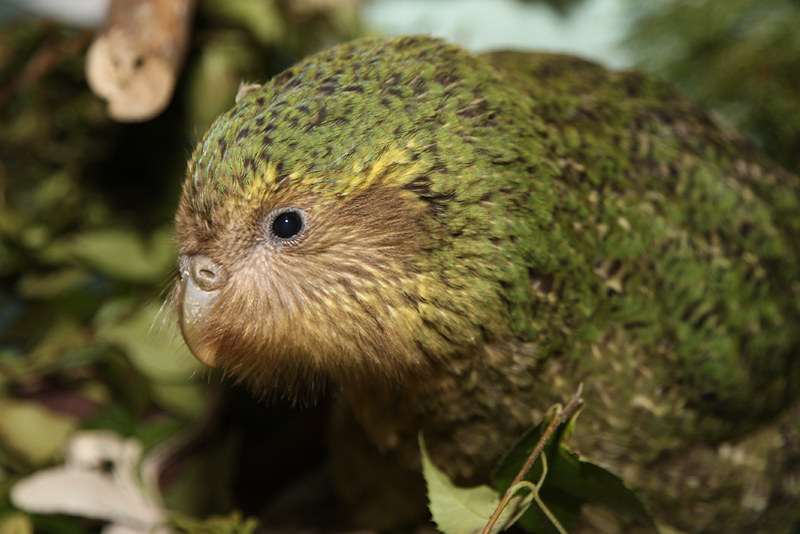
The flagship species of the Rakiura Island Temperate Forests ecoregion is the kakapo parrot. Image credit: Courtesy of Dianne Mason, Flickr
The 1,700 km2 island is separated from the mainland by the shallow Foveaux Strait, but has been connected to the South Island during past glacial periods, most recently about 14,000 years ago. Rakiura Island is hilly and wet, with little flat ground. Mean annual rainfall varies from 1,000 mm to 3,000 mm depending on altitude, and rainless periods of more than 2 weeks are uncommon. The highest peak, Mount Anglem, rises to 975 m above sea level.
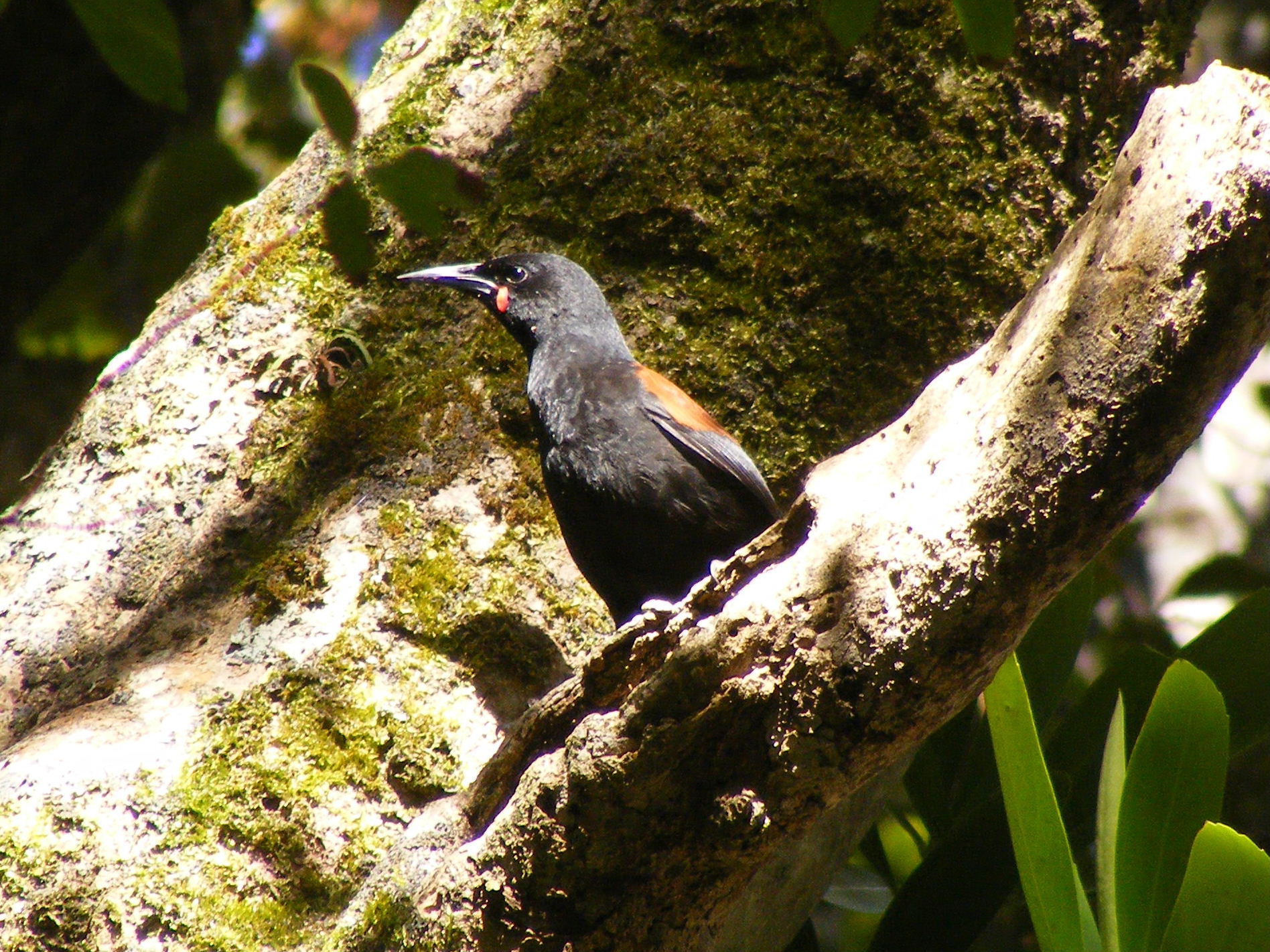
South Island saddleback. Image credit: Wikipedia, D-rew (CC by 3.0)
The lowland Podocarp-broadleaf forests are dominated by rimu (Dacrydium cupressinum), kamahi (Weinmannia racemosa), and southern rata or ironwood (Metrosideros umbellata). There are no Nothofagus and Libocedrus trees, common elements of the nearby South Island of New Zealand. Other plants found in the understory include Senecio spp., daisy-trees (Olearia spp.), and Coprosma spp., as well as Dendrobium cunninghamii orchids. Above 300 m sub-alpine manuka (Leptospermum scoparium) scrub takes over.
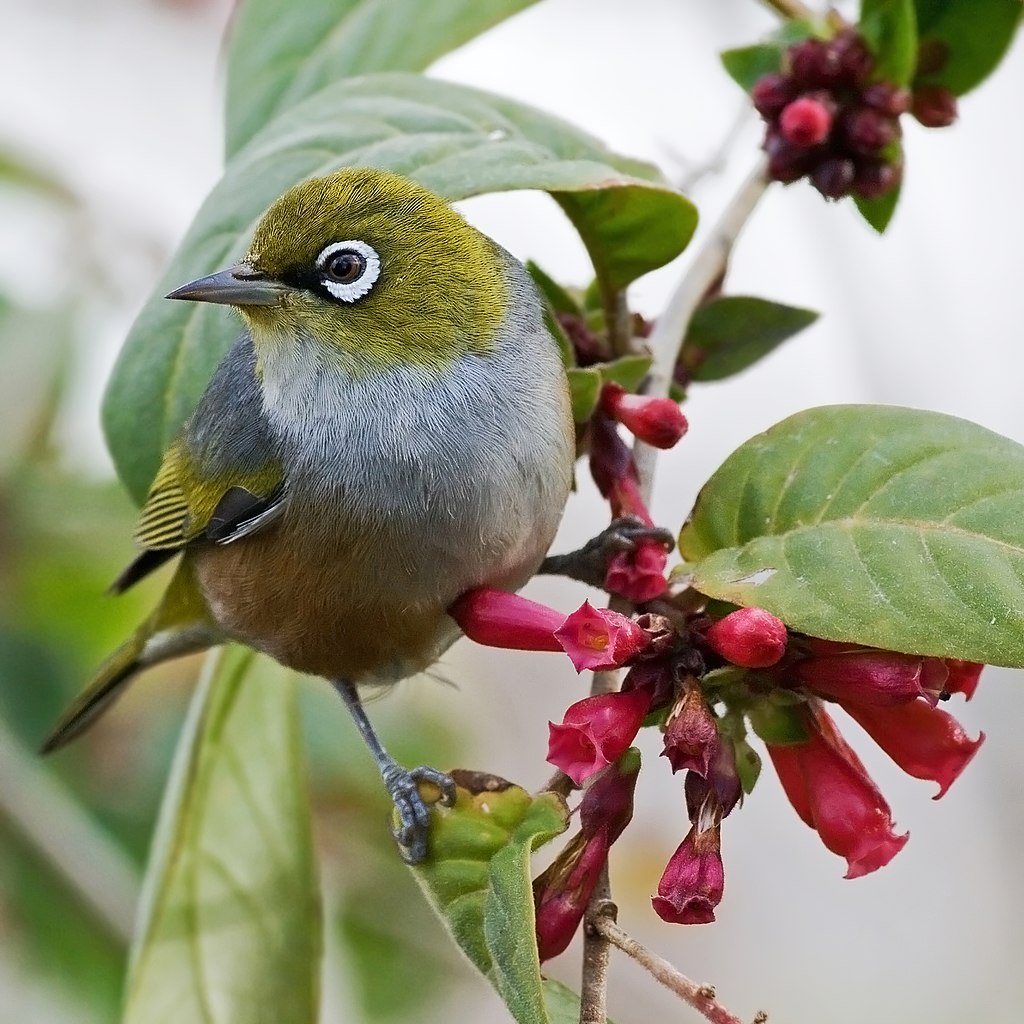
Silvereye. Image credit: Wikipedia, JJ Harrison (CC by 3.0)
There are few endemic plant species on Rakiura, and the island is more notable for the species that are not found here despite being common in similar habitats on mainland New Zealand, such as Nothofagus spp., Libocedrus bidwillii, or Phyllocladus alpinus. On the other hand, the bird fauna is rich with unusual elements, such as the endemic Stewart Island kiwi (Apteryx australis lawryi), weka rail (Gallirallus australis scotti), and fernbird (Bowdleria punctata stewartiana). The absence of invasive stoats and weasels—brought onto mainland New Zealand by European settlers—that prey heavily on birds has allowed several of New Zealand’s vulnerable species to persist.
However, feral cats, rats, and mice still have impacts and brown teal, rifleman, mohua, South Island kokako, the endemic laughing owl, falcon, Stewart Island weka, and yellow-crown parakeets have gone extinct on Stewart Island within the past 50 years; the populations of kereru, kaka, kakapo, and robin have also dramatically declined. Other unusual species include the handsome leaf-veined slug (Paryphanta spp.) and the harlequin gecko (Hoplodactylus nebulosis), one of the world’s southernmost lizard species living among soggy and cool cushion plants.
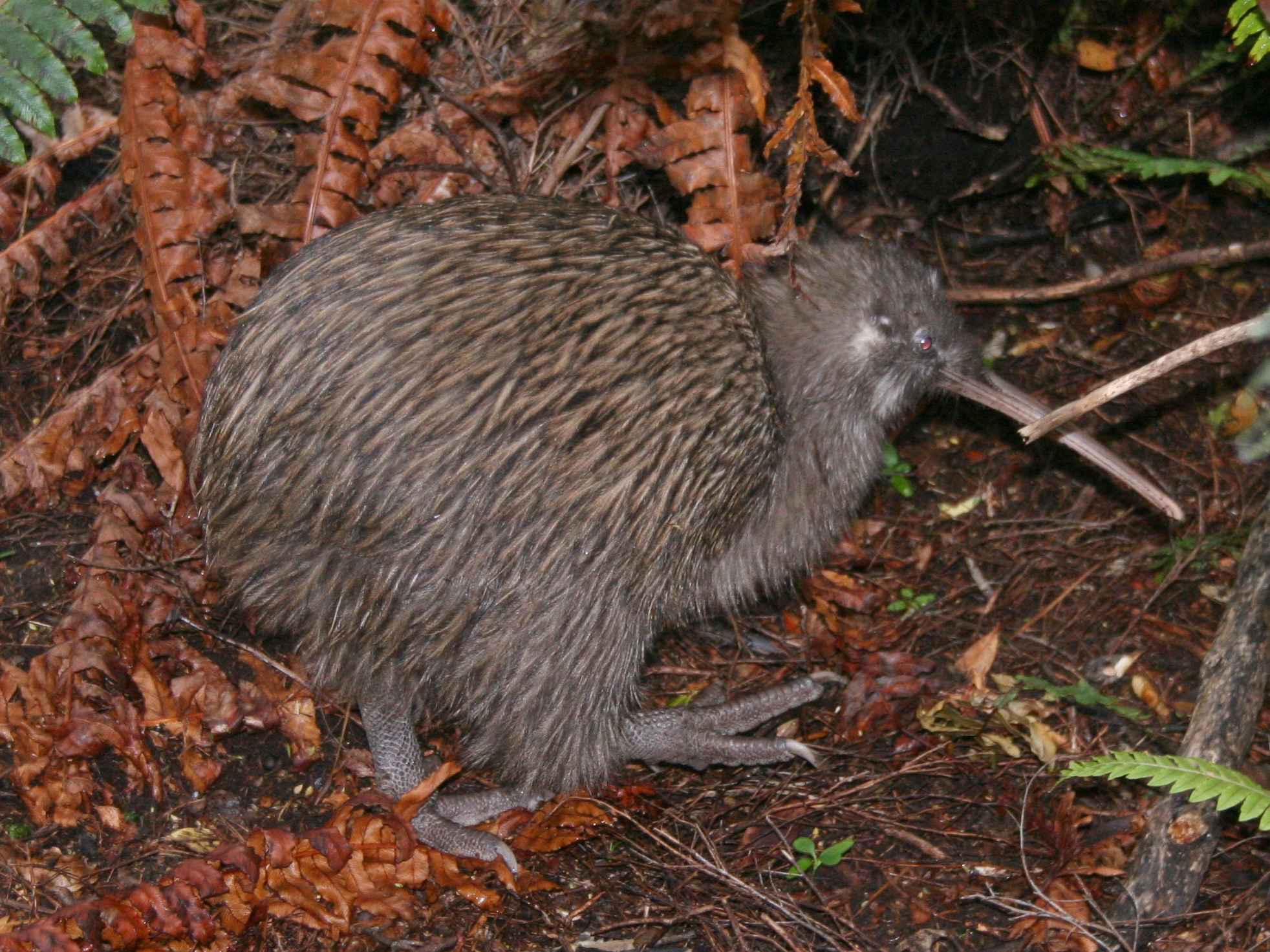
Southern brown kiwi. Image credit: Wikipedia, Glen Fergus (CC by 2.5 SA)
Introduced deer, feral cats, brush-tailed possums, and rats and mice continue to threaten native habitat and wildlife, particularly to kakapo and kiwi populations. Still, the lack of more efficient predators such as ferrets and stoats makes Rakiura a partial refuge for vulnerable wildlife. Rakiura National Park covers 85% of the main island.
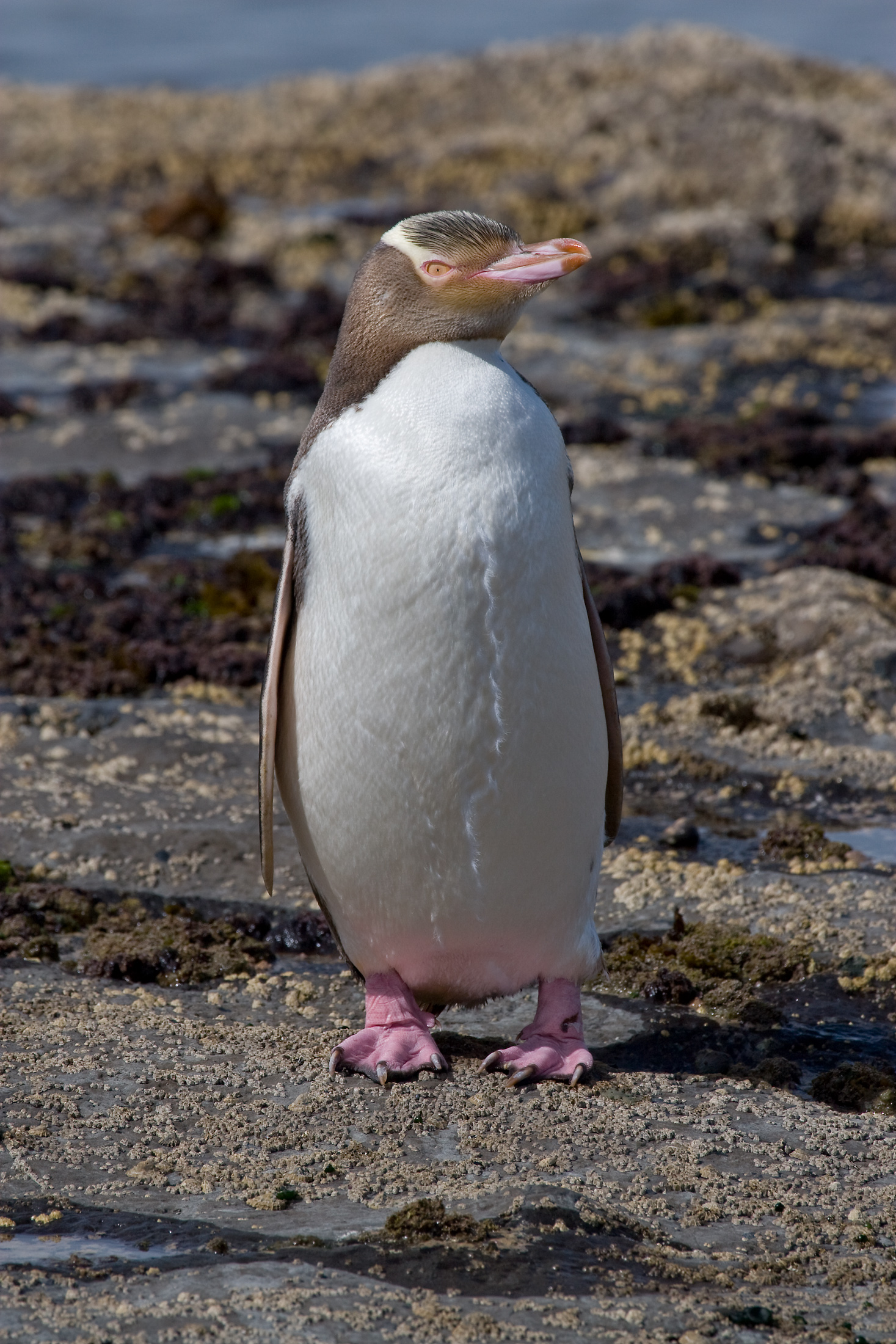
Yellow-eyed penguin. Image credit: Wikipedia, Christian Mehlführer (CC by 2.5)
Priority conservation actions for the next decade
- Continue efforts to remove introduced predators, particularly cats, possums, and rats and mice, from offshore islands, such Ulva Island, to enable the persistence and restoration of threatened species, such as the kiwi, kakapo, and weak.
- Ensure that fire regimes remain within natural ranges of variation.
- Strengthen efforts to eradicate one or more introduced predators from Rakiura Island.
-
-
- Harper, GA. 2009. The native forest birds of Stewart Island/Rakiura: patterns of recent declines and extinctions. Notornis 56:63-81.
- New Zealand Department of Conservation. 2012. Stewart Island/Rakiura Conservation Management Strategy and Rakiura National Park Management Plan. New Zealand Department of Conservation, Auckland.
- Roberts, W. 2019. Rakiura Island temperate forests. Accessed 1 June 2019 at https://www.worldwildlife.org/ecoregions/aa0407.
-
Cite this page: Rakiura Island Temperate Forests. Ecoregion Snapshots: Descriptive Abstracts of the Terrestrial Ecoregions of the World, 2021. Developed by One Earth and RESOLVE. https://www.oneearth.org/ecoregions/rakiura-island-temperate-forests/
-

